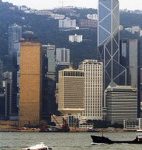Chinese tycoons are increasingly directing their investment into renewable power, and the Shandong Changxing Group, which is investing 5.5 billion yuan (US$807 million) in wind energy, is a prime example.
Company founder and CEO, Zhu Yuguo, ranks at 102 on the Forbes China Rich List, with a personal fortune of 5.71 billion yuan. Zhu earned his wealth in the papermaking industry. Founded in 1986, the Changxing Group became the largest manufacturer of vacuum rolling machinery – a key part of the papermaking process. But two decades later, the group plans to enter the field of wind power.
In June last year, Changxing agreed to work with Shaanxi Science and Technology University. The 5.5 billion yuan project they founded can already produce 1,000 wind turbines – of one to three megawatts (MW) capacity each – every year.
As the papermaking industry began to consolidate, its products became more high-end and Changxing needed to find a business with better growth prospects, said Zhu. After 20 years of operation, they had the capital, personnel and resources. When Zhu visited Europe three years ago and saw wind turbines lining the roads, he knew he had seen the new, fast-growing industry he was searching for. Europe and the United States were starting to make full use of their wind resources, and Zhu wanted in on the action.
Zhu saw obvious commercial opportunities in the energy sector, and in renewable resources in particular. There were too many issues with coal power, he said, with limited reserves and technology that needed improvement. He hoped another sector would be more in line with government efficiency and pollution-control directives. After China’s Renewable Energy Law came into effect in January 2006, Zhu’s plans were given a boost. The Chinese wind power industry finally started to pick up, where in the EU and US the technology was already in widespread use.
Zhu said China’s wind-turbine manufacturing is not yet mature; factories use foreign technology and import key components. Zhu aimed to research and develop the company’s own components and turbines, much in the way he developed a monopoly in China on key papermaking machinery that ultimately entered the export market.
Recognising this, Zhu founded the Changxing Group’s wind power equipment research and development centre two years ago. And the company’s experience in machinery manufacture gave it a distinct advantage when it came to producing wind turbines. Zhu said Changxing is already able to manufacture multi-megawatt turbines, which are set to become the standard for wind farms.
Changxing began producing wind power equipment last year, but it didn’t stop there. Preparations are now underway to build 100 50MW wind farms over the next five to 10 years. Changxing is set to manufacture and operate its own wind turbines.
But producing turbines has proved to be the most profitable part of the wind power sector, and it is where Changxing’s strengths lie. So, why did Zhu choose to build wind farms? One reason is that this allows the company to monitor the turbines in action: the wind farms will also be testing grounds. Zhu also believes that the market for turbine technology may become saturated in around 15 years. Changxing will therefore be cushioned from the effects of saturation at that time.
It takes eight to 10 years for a wind farm to start turning a profit. But Zhu said that can be shortened to three years if the same company manufactures and operates its own turbines.
China’s 11th Five Year Plan, from 2005 to 2010, has set a target of creating five gigawatts (GW) of wind generation capacity – meaning 28% growth annually. Provincial plans for wind power development suggest this target may be surpassed by a significant margin. Conservative estimates put wind power generating capacity in 2010 at 10GW, equivalent to 50% growth every year. This presents huge opportunities for turbine manufacturers. Turbines account for about 70% of the cost of establishing a wind farm. If these growth estimates are correct, between 35.5 billion yuan and 46.6 billion will have been spent on wind power equipment by 2010 (8.9 billion to 11.7 billion yuan every year).
Turbines are in short supply and investors are now ploughing money into the sector. Domestic manufacturers are working on prototypes and soliciting orders before launching large-scale production. The order books of one turbine manufacturer, Goldwind Technology, are now full until 2010.
This article first appeared in the National Business Daily. It is translated and republished with permission.
Homepage photo by sparktography



